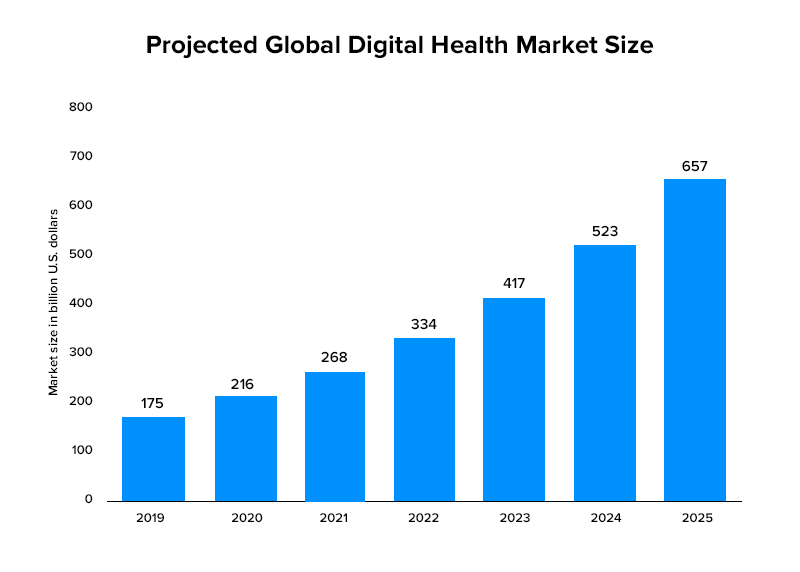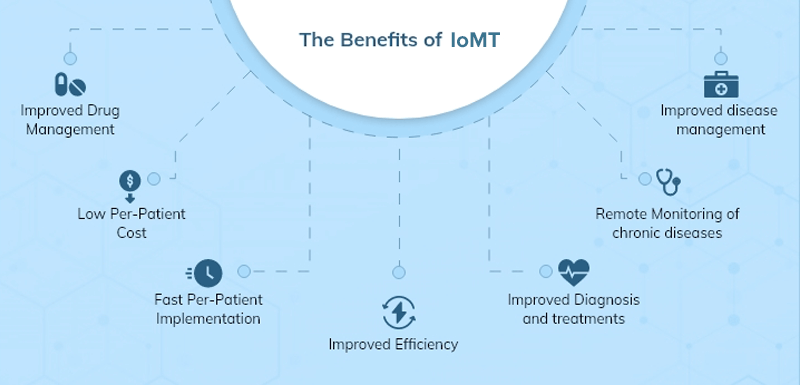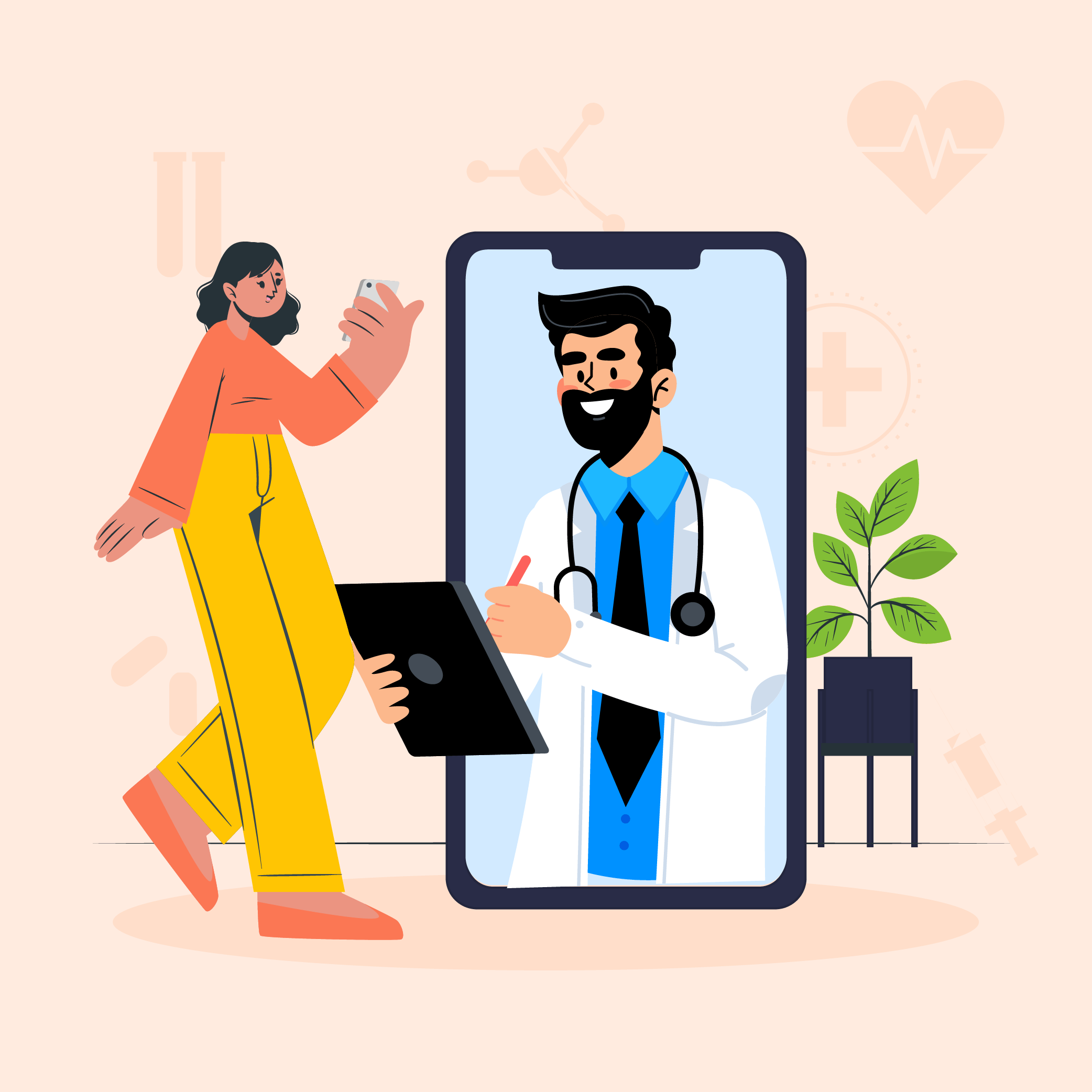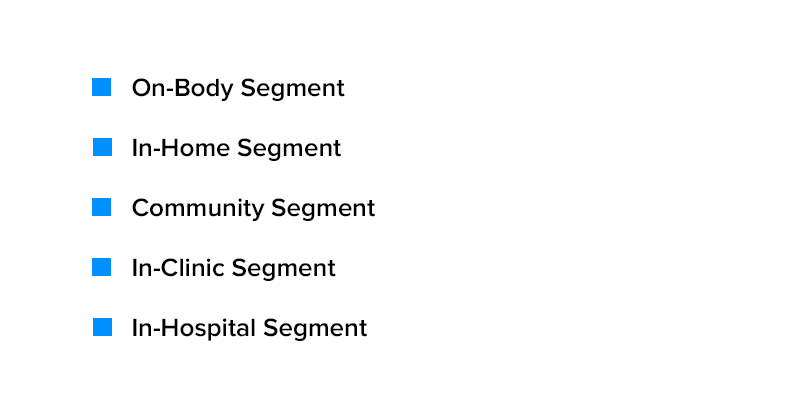How Internet of Medical Things Impact the Healthcare Industry?
Healthcare industry has come a long way from waiting on ques for a doctor’s call to just video calling doctors for consultation. Today the healthcare sector along with technology is improving patient care in many ways.
The modern healthcare systems offer data security, convenience for patients, and reduce costs. Especially with the benefits and technology of RFID, patient safety and hospital workflow are managed with ease.
Healthcare IoT, also known as the Internet of Medical Things (IoMT), has empowered remote patient consideration, improved clinic and pharmaceutical processes, and increased information precision. In hospitals, hygiene checking devices assist in preventing patient infections. IoT gadgets in hospitals also aid in managing refrigerator temperatures, speeding up emergency care and things of that nature.
What Is IoMT?
Internet of Medical Things (IoMT) is the amalgamation of software applications, medical devices, and health systems and services. It enables the patient to transfer medical data through the internet, which can help reduce hospital visits, hence having a patient-centric approach.
Internet of Medical Things trends streamlines the medical workflow management as the patient care has improved both in a remote location and inside facility walls
Here are some stats which prove how healthcare has become digital health leader through IoMT and the increasing popularity of healthcare software development services:
- According to Frost and Sullivan analysis, the global market of IoMT Market was $22.5 billion, and in 2021, it was expected to grow at 72.02 billion at a CAGR of 26.2%.
- The global Internet of Medical Things (IoMT) Market as per All The Research was valued at USD 44.6 million in 2018 and is expected to reach USD 254.6 million in 2026, growing at a CAGR of 24.4% during the forecast period (2016-2026).
- According to the Business Research Company, the global medical devices market is expected to grow at a CAGR of 6.1% from 2021 and reach $603.5 billion by 2023.
- As per Statista, the digital health market is expected to reach around 660 billion dollars by 2025.

- As per the Aruba’s research, six in ten healthcare organizations are already making use of IoT through patient monitors (64%) and X-ray/imaging devices (41%) among the main devices connected to the network.
Now that we have read the stats, we know how IoMT is built on several technologies and is offering various benefits to the medical industry. Let’s move on to the Impact that IoMT has for healthcare industries.
The market for Internet of medical things applications include smart devices like medical monitors and wearables, kiosks, smart pills, telehealth etc. Medical Internet of Things technology is implemented by almost 60% of healthcare organizations all around the world.
According to Deloitte, the medical technology available in IoMT Market is more than 500,000. These technologies are providing better outcomes to the patient as well as to the healthcare system.
Impact of IoMT in Healthcare
Data-Driven Decisions
IoT with the data and network of interconnected internet of medical things devices, make achievable the production of frameworks that can keep up with the intricacies of present day modern medical practices. Having the option to monitor patients progressively in real-time and reminding patients to take their medications are some of the well-known features that this technology offers.
Data-driven processes in the medical business helps administrators and medical faculty to make an informed decision that winds up providing benefits to the patients and digitizing the healthcare sector.
Smart Medical Devices
Internet of medical things devices help to track the medical components in a manner that was impossible or difficult a couple of years ago. Regardless of whether this implies providing inventories or observing health conditions, these devices can assist in accomplishing medical objectives by providing a good patient experience.
Smart watches and pillboxes are some well-known examples of this. The former can assist with checking biometrics while the latter can remind patients to take their meds.
Expanding the accuracy of diagnosis and therapies is possible on account of smart IoMT in medical devices. Providing healthcare mobility solutions via home-based gadgets is of great assistance for disabled patients.
Efficient Processes
With numerous shortcomings encompassing the medical world, IoMT has the potential and possibility to assist with improving things. Taking the example of True-Access, an application created by Koombea that permits medical staff and patients to travel through approved areas in medical facilities without mentioning or requesting permission.
In practice, it is a smart card that provides access, however it is more than that. Its information additionally assists to keep track of functional matters. With it, security can be improved and better administration decisions can be made on account of the accessible data.
Global Assistance
Smart medical gadgets gather and transfer significant health information, including however not restricted to blood pressure, pulse rate, oxygen and glucose levels, ECGs, and so forth.
Information stored in the cloud can be shared with doctors from any part of the globe. The doctors can take a look at the information from a device with the application installed to give a particular medical counsel and help patients regardless of their area. Thus, in the end, we get improved medical services and benefits regardless of the place and time.
Lower Costs
This is presumably the main benefit of the Internet of Things in medical care. IoT medical care solutions and associated medical gadgets monitor health in real-time, so that the patients can visit medical experts/ doctors less often. Generally, this diminishes costs because of less hospital stays and readmission.
Improved Patient Experience
Patients who are associated with the medical Internet of Things in the healthcare system wind up having a superior encounter, as they are more occupied with their therapy. Smart devices in medical services give significant information about the patient, so doctors can diagnose health problems with higher precision.
IoT medical care provides unlimited potential outcomes. It makes medical care more accessible and gives doctors valuable knowledge into patients’ health conditions outside the hospital. Patients get the best medical treatment regardless of their location.
Types of Internet of Medical Things Market
1. On-Body Segment
This market can be categorized as consumer wearables and medical or clinical-grade wearables. Consumer health wearables consist of personal fitness devices, including bands, wristbands, activity trackers, smart garments and sports watches. The apps are regulated by the authority and endorsed by experts based on the information obtained by consumer studies or clinical validation. Samsung medical, misfit and Fitbit are the companies in the market.
2. In-Home Segment
IoT is not only limited to healthcare but other industries as well like its impact on food and agriculture, construction, home devices, and so on.
Telehealth virtual visits, remote patient monitoring and personal emergency system, are included in the home segment. Through this package, the patient can easily and quickly receive medical care in case of an emergency. To slow down chronic disease progression, RPM monitors the physiological parameters of the patients in order to provide long term care.
3. Community Segment
Mobility service, emergency service, kiosks, Point of care devices, etc. are some of the component of these segmented sensors and IoMT tools in healthcare delivery and shipment, which measures humidity, shock, and temperature are an example of IoMT of logistics management
4. In-Clinic Segment
The devices used for clinical or administrative function either in the telehealth model or clinic are included in this segment of IoMT. Unlike the community segment, the healthcare professional can use the devices while the patient is located remotely. Example: Rijuvens clinicits is a platform in which physicians can access the patient at any time.
5. In-Hospital Segment
This segment includes patient flow management, assets management, inventory management, environment and energy monitoring. The best example of this segment is the Myway app that guides the patient to the hospital using the shortest route.
Potential of Internet of Medical Things in Healthcare Sector
The benefit of IoMT is that it provides less mistakes and accurate diagnoses at a lower cost. The IoT with mobile applications allows the patients to transport healthcare data to doctors, which helps monitor the chronic diseases.

For e.g., the Fitbit can track heart rate and accelerometer data of the patient simultaneously and accurately, which allows it to monitor patients suffering from ischemic heart diseases.
The IoMT brings a revolution in the healthcare system by improving the patient experience and eliminating unnecessary visits to hospitals or clinics. With a smart pill containing a microscopic sensor, the drug management and patients have improved. This smart pill transmits data to the healthcare professional through the connected device.
Now you know the reason behind the increasing demand of healthcare apps and healthcare app developers.
Parting Thoughts
COVID-19 has surely revamped the whole technological disruption in the current times. No doubt, with the pandemic there was a whole new slate of challenges which came up, but at the same time it provided immense opportunities for innovation in the Internet of Things in the healthcare sector.
Just like IoT is helping manufacturers for better operational efficiency, the same way IoMT has streamlined processes and has drastically improved the patient experience. While the providers have gained accurate data, diagnoses, and efficient time management, patients are getting benefit from convenience, higher engagement, and less physical medical visits.
If you are amazed about this field and its functions, then add value to your healthcare software development services and solutions with our healthcare app development company. If you want an intellectual consultation then you can connect with our experts anytime. We, being one of the top healthcare app development agencies in USA, are happy to spread technology and smiles.

strategies your digital product..






